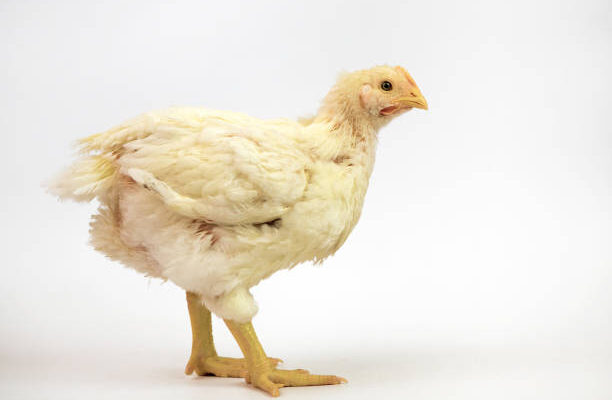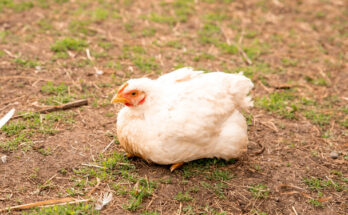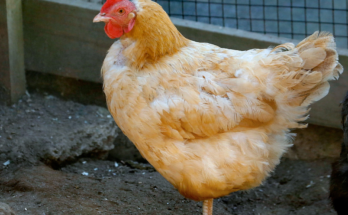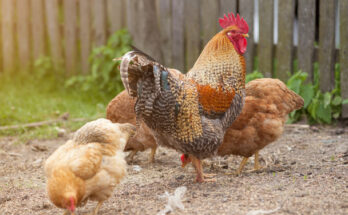The Ultimate Guide to Calculating the Cost of Feeding Your Chicken Per Day
Understanding the cost to feed a chicken per day is essential for any poultry farmer. It directly impacts the overall expenses and profitability of the chicken farming business. In this post, we will delve into the significance of knowing the daily cost of feeding a chicken and its relevance to effective poultry management.
Poultry feed accounts for a significant portion of the total expenses in chicken farming. By gaining insights into the cost to feed a chicken per day, farmers can make informed decisions regarding budgeting, pricing, and overall financial planning. It also plays a crucial role in determining the quality of the feed provided to the chickens, which ultimately influences their health and productivity.
Additionally, understanding the daily cost of feeding a chicken enables farmers to optimize their feeding strategies, minimize wastage, and ensure that the nutritional needs of the birds are adequately met. This knowledge empowers poultry farmers to streamline their operations, improve efficiency, and maximize the returns on their investment in poultry farming.
Factors Affecting Chicken Feed Costs
When it comes to calculating the cost of feeding chickens on a daily basis, several factors come into play. Understanding these influences is crucial for determining the overall expenses and ensuring that the nutritional needs of the chickens are adequately met.
Type of Feed
Different types of feed are available for chickens, each serving a specific purpose based on the bird’s age and purpose. Starter feed, designed for young chickens, is formulated to provide essential nutrients for rapid growth and development. Grower feed is intended for adolescent chickens to support steady growth and muscle development, while layer feed is tailored to meet the needs of laying hens, providing the necessary nutrients for egg production.
Each type of feed comes with its unique nutritional composition, impacting the daily feeding costs. Starter feed, for instance, may cost more per bag than grower or layer feed due to its formulation with higher protein content, essential for young chicks’ growth. You can see the dietary requirements for poultry here.
Breed of Chicken
The breed of chicken also plays a significant role in determining the daily feed cost. For instance, broiler chickens, bred for meat production, have different nutritional requirements compared to layer chickens, which are bred for egg production. Broilers require feed with higher protein content to support their rapid growth, resulting in higher daily feeding costs. Conversely, layer chickens need feed formulated with nutrients to support egg production, impacting the overall cost of feeding them on a daily basis.
Market Prices of Feed
The fluctuation in feed prices can significantly influence the overall cost of feeding chickens on a daily basis. Market trends and seasonal variations can lead to price changes in essential feed ingredients such as corn, soybean, and grains. Understanding these fluctuations and their impact on overall feed costs is essential for budgeting and planning.
Keeping a close eye on market trends and being aware of seasonal variations in feed prices can aid in making informed decisions regarding purchasing feed for chickens. Adapting feeding strategies based on market price trends can help mitigate potential financial burdens while ensuring the nutritional needs of the chickens are met.
Understanding the interplay of these factors is essential in managing the cost of feeding chickens on a daily basis, ensuring optimal nutrition while being mindful of budgetary considerations.
Calculating Daily Feed Costs
When it comes to raising chickens, calculating the daily feed costs is an essential aspect of managing the expenses. To ensure that your flock receives adequate nutrition without overspending, it’s crucial to understand how to calculate the daily feed costs accurately. Here’s a breakdown of the methods for calculating the daily cost of feeding a chicken:
Cost Per Pound of Feed
Start by determining the cost per pound of the feed you are providing to your chickens. This can vary depending on the type of feed you choose, such as organic, non-GMO, or conventional options. Keep in mind any additional expenses, such as shipping costs or taxes, that may contribute to the overall cost per pound.
Average Daily Feed Consumption
Next, observe the average daily feed consumption of your chickens. This can be influenced by factors such as age, breed, and environmental conditions. By monitoring their daily consumption over a period of time, you can calculate an average figure to use in your cost analysis.
Total Daily Feeding Expenses
Multiply the cost per pound of feed by the average daily feed consumption to determine the total daily feeding expenses. This figure will give you a clear understanding of the daily cost of providing feed for your chickens, allowing you to budget effectively and make informed decisions regarding their nutrition.
By utilizing these methods, you can gain insight into the daily feed costs for your chickens, enabling you to manage your expenses efficiently while prioritizing the well-being of your flock.
Economical Feeding Practices
When it comes to minimizing the cost of feeding your chickens, there are several economical feeding practices that can help you save money while ensuring your flock receives the nutrition they need to stay healthy and productive. Let’s delve into some cost-effective feeding strategies that can make a positive impact on your poultry operation.
Alternative Feeds
Utilizing alternative feeds such as kitchen scraps and surplus garden produce can significantly reduce your daily feeding costs. Chickens can benefit from a variety of kitchen scraps including vegetable trimmings, fruit peels, and cooked grains. Additionally, surplus garden produce such as leafy greens and overripe fruits can serve as nutritious and cost-effective supplements to commercial feed. By incorporating these alternative feeds into your chickens’ diet, you can cut down on the amount of commercial feed required, ultimately lowering your overall feeding expenses.
Ration Formulation
Formulating balanced rations tailored to meet the specific nutritional requirements of your chickens is key to optimizing feed costs. By understanding the nutritional needs of your flock and utilizing locally available feed ingredients, you can create custom rations that provide the essential nutrients while minimizing unnecessary expenses. For instance, blending grains, protein sources, and supplements to meet the protein, energy, vitamins, and mineral requirements of the chickens can result in a more cost-efficient feeding regimen.
Minimizing Feed Wastage
Practical methods to minimize feed wastage play a crucial role in reducing feeding costs. Invest in well-designed feeders and waterers that are proven to minimize spillage and spoilage. Additionally, implementing feeding management practices such as regular cleaning of feeding equipment and providing the appropriate amounts of feed at the right intervals can further reduce waste. By employing these strategies, you can ensure that more feed is consumed by the chickens rather than being wasted, thereby maximizing the cost-effectiveness of your feeding program.
Budgeting for Chicken Feed Costs
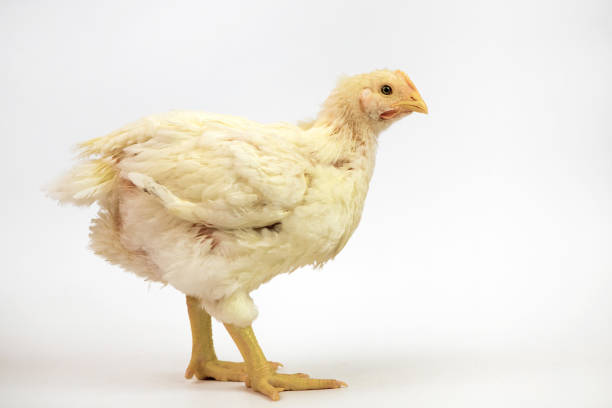
When it comes to raising chickens, one of the most essential aspects is budgeting for their feed costs. Having a well-structured budget for chicken feed not only ensures that your birds are adequately nourished but also helps in maintaining a healthy balance in your overall poultry management expenses. Let’s dive into the key factors to consider when establishing a budget for chicken feed costs.
Assessing Feed Requirements
To create an effective budget for chicken feed costs, start by assessing the specific feed requirements of your flock. Determine the number of chickens you have and their respective breeds, as different breeds may have varying nutritional needs. Consider the age of the chickens, as their feed requirements change as they mature. By understanding these factors, you can accurately estimate the quantity of feed needed, preventing over-purchasing or shortages.
Allocating Financial Resources
Once you have a clear understanding of your chickens’ feed requirements, allocate a portion of your overall poultry budget to cover the feed costs. Consider creating a separate category for feed expenses within your budget, ensuring that it is given due priority. By allocating specific financial resources to chicken feed costs, you can effectively manage your overall expenses and prevent overspending in other areas of poultry care.
Adjusting for Seasonal Variations
Accounting for seasonal variations in feed prices is crucial when budgeting for chicken feed costs. For example, grain prices often fluctuate throughout the year due to harvest seasons and market demand. By proactively adjusting your budget to accommodate these fluctuations, you can avoid unexpected financial strain during periods of increased feed costs. Keep an eye on market trends and historical price variations to make informed adjustments to your budget as needed.
Incorporating these budgeting strategies into your poultry management approach can help you maintain a sustainable and cost-effective feeding regimen for your chickens while ensuring their nutritional needs are consistently met. By assessing feed requirements, allocating financial resources, and adjusting for seasonal variations, you can establish a well-rounded budget for chicken feed costs that supports the overall health and productivity of your flock.
Conclusion
Feeding chickens entails more than just providing sustenance. It is a crucial aspect of poultry farming that directly impacts the birds’ health, egg production, and overall profitability. By understanding the cost factors involved in feeding chickens, poultry farmers can make informed decisions to optimize their feeding practices and ensure the well-being of their flock.
Key Takeaways
- The cost to feed a chicken per day is influenced by various factors such as the type of feed, nutritional requirements, and flock size.
- Implementing efficient feeding practices can help minimize wastage and reduce overall feeding costs, contributing to a more sustainable poultry farming operation.
- Balancing the nutritional needs of chickens with the economic considerations of feed costs is essential for maximizing production while maintaining profitability.
Significance of Efficient Feeding Practices
Efficient feeding practices play a pivotal role in the success of a poultry farming venture. By carefully managing the cost to feed a chicken per day, farmers can achieve a balance between meeting the nutritional needs of their flock and optimizing their operational expenses. This not only impacts the bottom line but also reflects a commitment to responsible and sustainable farming practices.
In conclusion, the cost to feed a chicken per day is a significant factor for poultry farmers to consider. By adopting efficient feeding practices and staying mindful of cost implications, farmers can ensure the well-being of their flock while maximizing profitability in their poultry operations.
